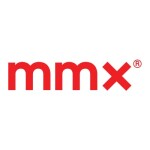Organizations invest millions in building and protecting their reputation and trademarks to drive sales and investment. A brand's website also probably has a space where recent accolades, or perhaps charitable and social enterprises it proudly supports, are listed.
But what if a third party registers that brand's trademark with an adult-themed Top-Level Domain (TLD) or uses look-alike characters from non-Latin scripts to mimic the trademark – ie. creates a homoglyph? The pornographic website using the trademark could receive millions of hits a day, and each time someone accesses the site they see the brand owner's mark.
This poses a dilemma for brands. Preemptively block a third party from registering names in both Latin and other scripts? Take retrospective action and try to seize control of the domain? Or ignore and take the view that the potential damage to reputation does not warrant the investment?
By the end of 2021 this will be a decision facing many brand owners as they decide whether to upgrade to 'AdultBlock' and 'AdultBlock+'. Minds and Machines (MMX), the registry behind the domain blocking service for the .xxx, .sex, .porn and .adult TLDs, believes brand owners should act now to avoid reputational damage.
A decade of adult TLDs
The .xxx TLD – billed as a safe space for adult content – was launched, amid some controversy, in 2011.
Administered by ICM Registry, a sunrise period (Sunrise B) followed.
This gave trademark owners outside of the adult industry a chance to block their mark from being used in effectively the only script recognized on the DNS at that time (Latin).
The period of protection lasted for ten-years (until December 2021).
Four years after acquiring .xxx, ICM Registry, now owned by MMX, expanded and took control of the .sex, .porn and .adult TLDs.
As the 10-year deadline approaches, MMX says 'AdultBlock' and 'AdultBlock+' will help brands protect their marks across all four adult TLDs not just in the Latin script but across all look-alike homoglyphs. Around 70,000 brands that signed up to the initial .xxx Sunrise B programme are also encouraged to expand their protection across the remaining TLDs.
Brands can choose between a one, three, five or 10-year term.
One industry source tells Managing IP that adult-themed TLDs were originally intended to act as a "R-rated section of the internet" where adult content could be hosted away from the risk of accidental discovery by children and those who might unintentionally stumble across pornographic material hosted on mainstream TLDs such as .com and .net.
The damage to a brand if a pornographic website is registered in its name – particularly if the brand is not active in or fundamentally at odds with the adult industry – could be significant, the source adds.
Sean Wilke, Director of Domain Services at Corsearch, a global trademark services and brand protection company, says most internet users can discern between genuine and bad actors online but that it nevertheless "is an eyebrow raiser and reputational concern" if a brand's marks are used on a pornographic website, particularly if it becomes common knowledge.
A brand's eye view
Speaking to Managing IP, in-house and private practice lawyers say blocking is a route they would consider but that it would depend on certain factors, including a risk of confusion, and cost.
David Lossignol, Global Head of Trademarks, Domain Names and Copyright at Novartis, a pharmaceutical company in Switzerland, says the company's brands are not frequently registered by third parties across adult-themed extensions so the service is "probably not something we will use."
"I would probably have replied differently if we had products for sexual dysfunction in our portfolio, for example," he says.
Lossignol adds that domain name blocking is more interesting to brand owners than filing a UDRP, but that it would ideally be across many domain extensions. Since brands are territorial and that different companies can legitimately own the same trademark in different fields, "blocking can be hard to organize and/or can be seen as too restrictive in some instances," he says.
Brian King, Director of Internet Policy and Industry Affairs at a corporate domain name registrar company in the US, says that the most risk is likely to come from potential damage to reputation rather than any significant risk of confusion among consumers.
"Many brands will not want their brand associated with an adult-themed TLD, and a blocking order is a good way of ensuring protection," he explains.
Charles Louvrier, Senior IP Lawyer at French cosmetics company L'Occitane, says blocking services can be very useful.
"For a small cost they can prevent harmful registrations and use of domain names associated with one's trademarks. It also withdraws some work, including domain watch assessments and administrative or legal actions and costs, such as Uniform Domain-Name Dispute-Resolution Policy (UDRP) and defensive registrations," he says.
Louvrier, like King at MarkMonitor, adds that the main concern would be damage to reputation "especially if adult content was used alongside our brand."
Although a likelihood of confusion would probably be unlikely, it would depend how the cyber squatter would use the domain, he adds.
Proactive v reactive
Gavin Mills, Sales Director at Safenames, a domain name management company in the UK, believes it is easier for a brand owner to be proactive rather than reactive.
"Most of the registrations seen during the .xxx sunrise period were defensive," Mills points out, adding: "As a non-adult brand you probably never want your brand to be associated with adult entertainment."
He believes blocking tools are more cost-effective than taking retrospective action.
Mills points out that a brand could easily pay more than $3,000 for a single UDRP case. "If you have two or three cases in a five- or 10-year period, it is already more expensive than blocking at an early stage."
James Godefroy, Consultant at IP firm Rouse in China, does not agree and believes that before the launch of .xxx there was speculation about potential harm to brand owners. However, the cases of actual harm to brands have been "very few and far between". This is largely due to the 70,000 trademarks that participated in the Sunrise B and took a proactive approach to protect their brands.
He says most brands will be keen to avoid even a "short-term" association with an adult-related domain name. He admits there are two sides to the coin as it is "impossible to register every single domain which could be used to the detriment of a business given the expansion of TLDs" but "the advantage [of blocking] is that it could be cheaper than a standard defensive registration."
New online threats
The AdultBlock service only blocks registrations across the four adult-themed TLDs. However, AdultBlock+ also covers typos and homoglyph variations of a trademark. It could, for example, detect the difference between I, l and ĺ (uppercase i, lowercase letter L and lowercase L with acute) if any were used by a third party to try to infringe a trademark surreptitiously.
The service also covers equivalent internationalised domain name characters and can detect more than 20 scripts.
To register for either AdultBlock service, a brand must have validated its trademark in the Trademark Clearinghouse or have participated in the original .xxx sunrise programme.
Wilke at Corsearch says AdultBlock+ can also help protect consumers from new threats that have emerged or grown since 2011.
"Homoglyph variations is an added bonus as brands often don't consider this when registering. We've had several cases where clients have never seen local language variations only to be surprised when an issue arises," he says.
King at MarkMonitor agrees: "The internet is very different to how it was 10 years ago (when Sunrise B was launched)," he says.
"By not blocking, a brand risks opening itself up to other infringements such as phishing attacks. Data suggests these types of attacks are on the increase and bad actors may frequently use typos or homoglyphs in domains.
"A brand could try to register domains defensively, but with hundreds of potential variations, at some point you have to stop."
Mills at Safenames adds that phishing scams are often used to trick consumers into giving away data or personal information, causing another potential headache for a brand whose name may be used in this regard.
A lot can change in 10 years – particularly in the online world. Phishing attacks cause far-reaching damage to reputation, particularly on social media, continue to be a huge concern.
The case for AdultBlock is far more compelling than a generic blocking service, it's about reputation management, brand protection and cost-effective domain management.
Adult entertainment and mainstream businesses have to co-exist on the Internet and with more than 80% of all adult-site searches starting at Google, it's easy to see why rogue operators would want to tap into the search traffic generated by more than 1.7 billion people using Google every day.
AdultBlock and AdultBlock+ provide the right balance between cost and defensive value with a smart level of proactive protection for brands and their consumers.











